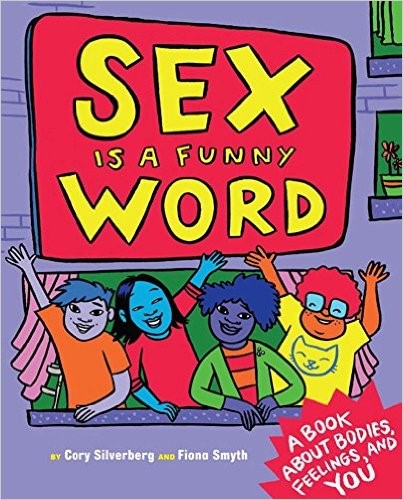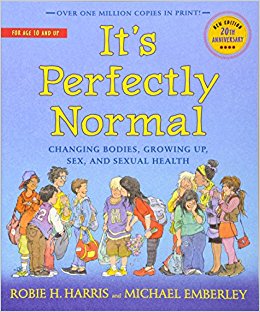Sexual Orientation, Behavior and Identity
- 103454
- 979
Learn the difference between sexual orientation, sexual identity, and sexual behavior, and how they contribute to one’s sense of self. [AMZ-121]
Sexual Orientation
This is defined as who you are attracted to physically and/or romantically.
Sexual Identity
This is defined as an individual’s internal sense of their own gender and sexual orientation.
- Sexual behavior is what we do sexually, both with ourselves and others.
- A person’s sexual orientation, sexual behavior, and sexual identity may align but do not need to.
Youth
Sexual orientation is all about who you’re romantically and/or sexually attracted to. Some are attracted to people of a different gender (heterosexual), and some are attracted to people who are the same gender (gay or lesbian). Some are attracted to people of either the same or a different gender (bisexual), and some people do not experience any sexual attraction (asexual), though they may be interested in a romantic relationship. It’s totally normal to have questions about sexual orientation, so it’s okay if you’re wondering about who you may feel attracted to! Some people know their sexual orientation at a very young age and others don’t know it until they are much older.
Many people’s sexual orientation aligns with their sexual identity and sexual behavior. For example, a woman who is sexually attracted to other women and engages in sexual behaviors only with other women may identify as a lesbian. However, not everyone’s sexual orientation, behavior and identity align. There are many variations in these areas, for different reasons. For example, someone may be attracted to people of the same gender but still may identify as heterosexual and engage in sexual behaviors with people of different genders—they may be “in the closet” (not open about their sexual orientation). Or a person may identify as asexual but still engage in sexual behaviors with a partner. All of these combinations (and others) can happen and it’s normal. It’s important not to feel pressured to label yourself in order for these to align. The only person who can determine your sexual identity and its meaning is you.
FAQs
Sexual orientation refers to who you feel attracted to romantically and/or sexually. It’s totally normal to have intense attractions during puberty. People who identify as gay or lesbian typically find that over time their attraction to people of the same gender gets more clearly focused. Right now, you may find yourself falling for a classmate or developing a crush on a particular person. You may even find these experiences pleasurable, troubling or a mix of the two. Don’t worry, as you get older it may become clearer. For many it’s a journey, and your attractions may even change over the years.
For now, you may not know how to label your romantic and sexual feelings, but there’s no rush to do this. Just know that this is all perfectly normal, you are not alone in asking this question and there are no “right” or “wrong” answers.
Understanding your sexual orientation can be confusing. You might feel that you don’t fit into a specific category, and may notice that you have sexual and romantic feelings for people of your own gender and a different gender. These feelings may indicate you will identify as bisexual, but don’t worry about being unsure. Understanding your sexual orientation develops over time, and you should feel no pressure to identify in any particular way.
Your sexual orientation refers to the gender(s) of who you’re attracted to or who you fall in love with. While sexual orientation is not a choice, it can shift over time for some people. It also may be difficult to understand and make sense of your feelings. Separately, your identity is what you decide to call yourself, which is a decision that can only be made by you. You get to figure out which sexual identity best suits you and what that identity means. Some of these identities are gay, pansexual, lesbian, demisexual, heterosexual, bisexual, asexual and more! It’s also all right if your identity changes over time or doesn’t exactly match up with your sexual orientation or sexual behaviors. There is no need to feel pressured into identifying a certain way.
Parents
Someone’s sexual orientation is determined by the gender(s) of the people that person is romantically and/or sexually attracted to. Some people first become aware of their sexual orientation during puberty. Hormonal changes associated with puberty can trigger new feelings of romantic or sexual attraction. This can be confusing and even a bit scary for many tweens and teens. It is essential to help young people know that it may take time to understand what gender(s) they find romantically and/or sexually attractive. It’s okay if they’re not sure how they want to identify in terms of sexual identity. It’s also important to reiterate that there are no right or wrong answers; only they can determine their sexual orientation and identity. As they get older, they will be better able to figure out who they find sexually attractive.
Many people’s sexual orientation aligns with their sexual identity and sexual behavior. For example, a woman who is sexually attracted to other women and engages in sexual behaviors only with other women may identify as a lesbian. However, not everyone’s sexual orientation, behavior and identity align. There are variations in these areas, for different reasons. For example, a person may be attracted to people of the same gender but may identify as heterosexual and engage in sexual behaviors with people of different genders if they are in the closet (not open about their sexual orientation). Or, a person may identify as asexual but still engage in sexual behaviors with a partner. All of these combinations (and others) are perfectly natural.
It is important that you show your children that you love and support them, regardless of their sexual orientation, behavior or identity. If your child has trusted you with information about their sexual identity, do not share that information with others without permission. Respect them and their decision to come out when and if they feel comfortable and safe. Do not pressure them to align their sexual identity to their behavior and orientation, even if this may be confusing to you. The only one who can determine a person’s sexual identity and its meaning is that person and the only way for you to know is if they tell you.
We have made great advances in rights for LGB+ people in the United States, but homophobia continues to exist in some communities, homes and schools. Lesbian, gay and bisexual young people have the right to safe and accepting environments. They have the right to live with dignity and without fear of stigma, discrimination and violence. Gay, lesbian and bisexual youth need inclusive and culturally-appropriate health care and education. And, most importantly, they need to be accepted and loved for who they are.
Conversation Starters
It’s important that your children know that you are open to talking about sexuality and sexual orientation with them. You could start these important conversations using some of the following:
“Is there anyone at school you like or are attracted to?”
If your child says a friend’s sister or a teacher is getting married, you can say, “That’s fantastic! Is she marrying a man or a woman?”
Gently correct your child. Let them know it’s not okay to use “gay” as a way to put down or demean someone or something. Tell them that if they mean “that’s so stupid,” then they should say that.
Educators
Someone’s sexual orientation is determined by the gender(s) of the people that person is romantically and/or sexually attracted to. Some people first become aware of their sexual orientation during puberty. Hormonal changes associated with puberty can trigger new feelings of romantic or sexual attraction. This can be confusing and even a bit scary for many tweens and teens. It is essential to help young people know that it may take time to understand what gender(s) they find romantically and/or sexually attractive. It’s okay if they’re not sure how they want to identify in terms of sexual identity. It’s also important to reiterate that there are no right or wrong answers; only they can determine their sexual orientation and identity. As they get older, they will be better able to figure out who they find sexually attractive.
Many people’s sexual orientation aligns with their sexual identity and sexual behavior. For example, a woman who is sexually attracted to other women and engages in sexual behaviors only with other women may identify as a lesbian. However, not everyone’s sexual orientation, behavior and identity align. There are variations in these areas, for different reasons. For example, a person may be attracted to people of the same gender but still may identify as heterosexual and engage in sexual behaviors with people of different genders if they are in the closet (not open about their sexual orientation). Or, a person may identify as asexual but still engage in sexual behaviors with a partner. All of these combinations (and others) are perfectly natural.
It is important that you show your students that you support them, regardless of their sexual orientation, behavior or identity. The only one who can determine a person’s sexual identity and its meaning is that person and the only way for you to know is if they tell you.
We have made great advances in rights for LGB+ people in the United States, but homophobia continues to exist in some communities, homes and schools. Lesbian, gay and bisexual young people have the right to safe and accepting environments. They have the right to live with dignity and without fear of stigma, discrimination and violence. Gay, lesbian and bisexual youth need inclusive and culturally-appropriate health care and education. And, most importantly, they need to be accepted and loved for who they are.
- What is the difference between sexual orientation, sexual behavior and sexual identity?
- Why is it important not to assume someone’s sexual identity?
- Why might someone’s sexual orientation, behavior and identity not match up?
- What could you say to a friend who was confused about their sexual identity?
National Sex Education Standards
Differentiate between sexual orientation, sexual behavior, and social identity
International Technical Guidance on Sexuality Education
The Social Construction of Gender and Gender Norms
Finding Help and Support
Sex, Sexuality and the Sexual Life Cycle



